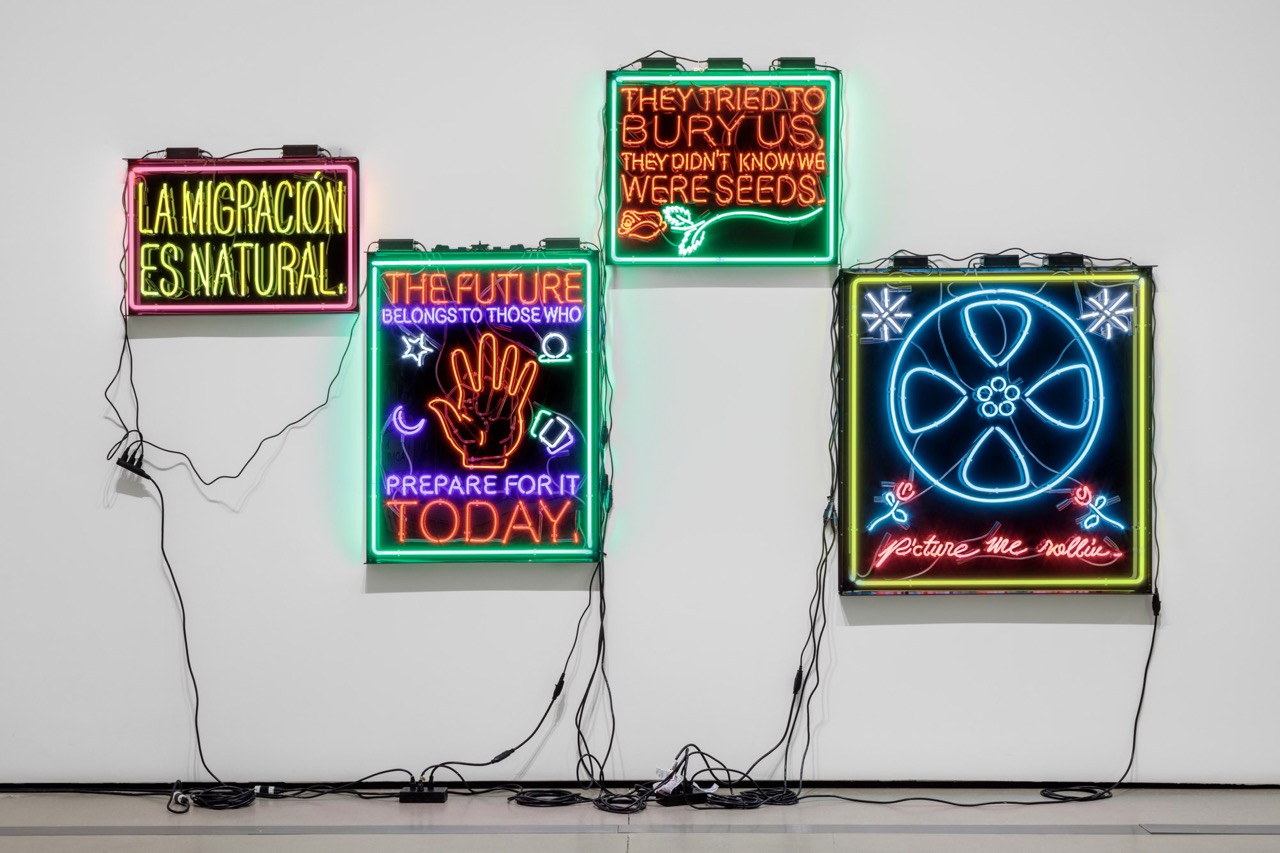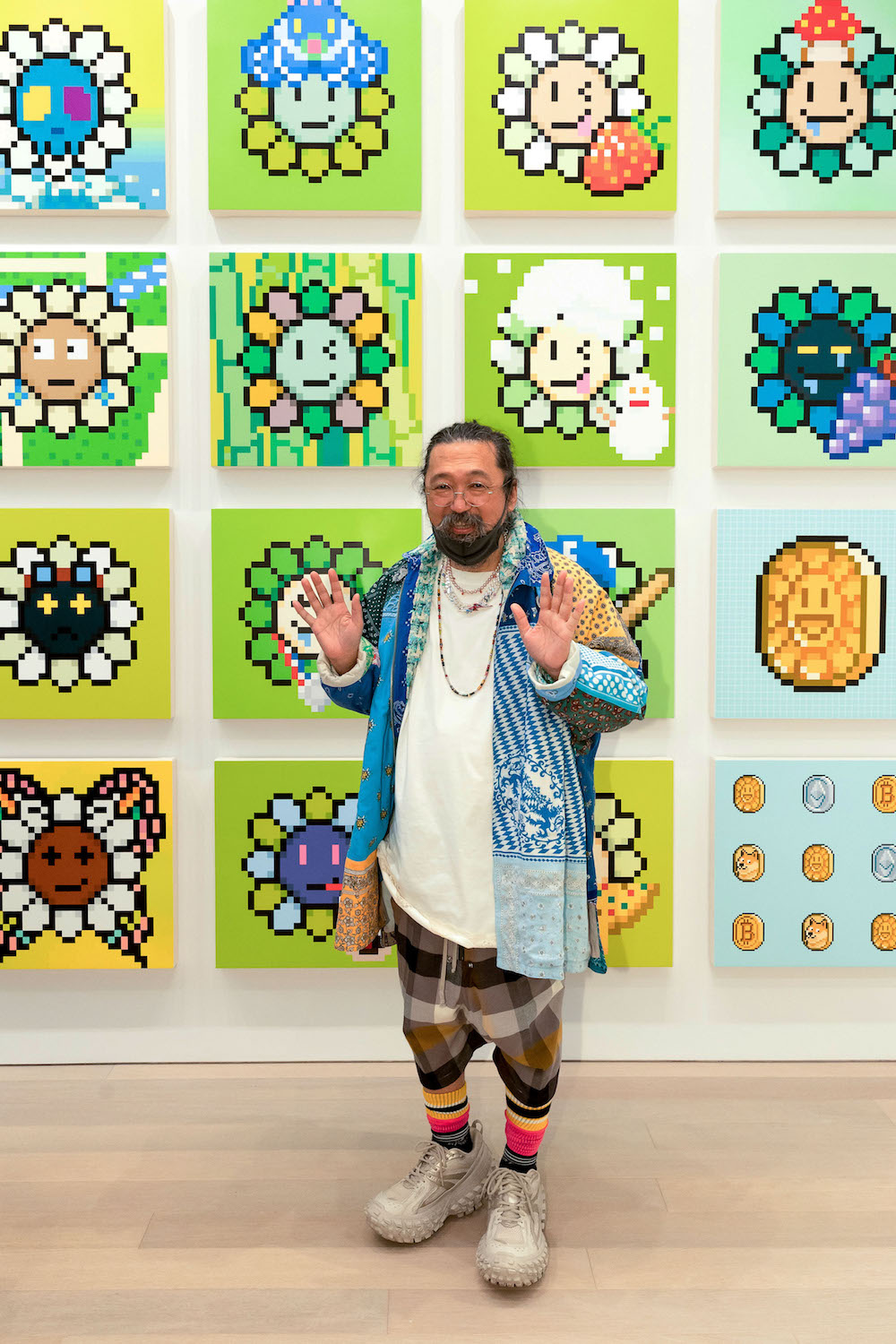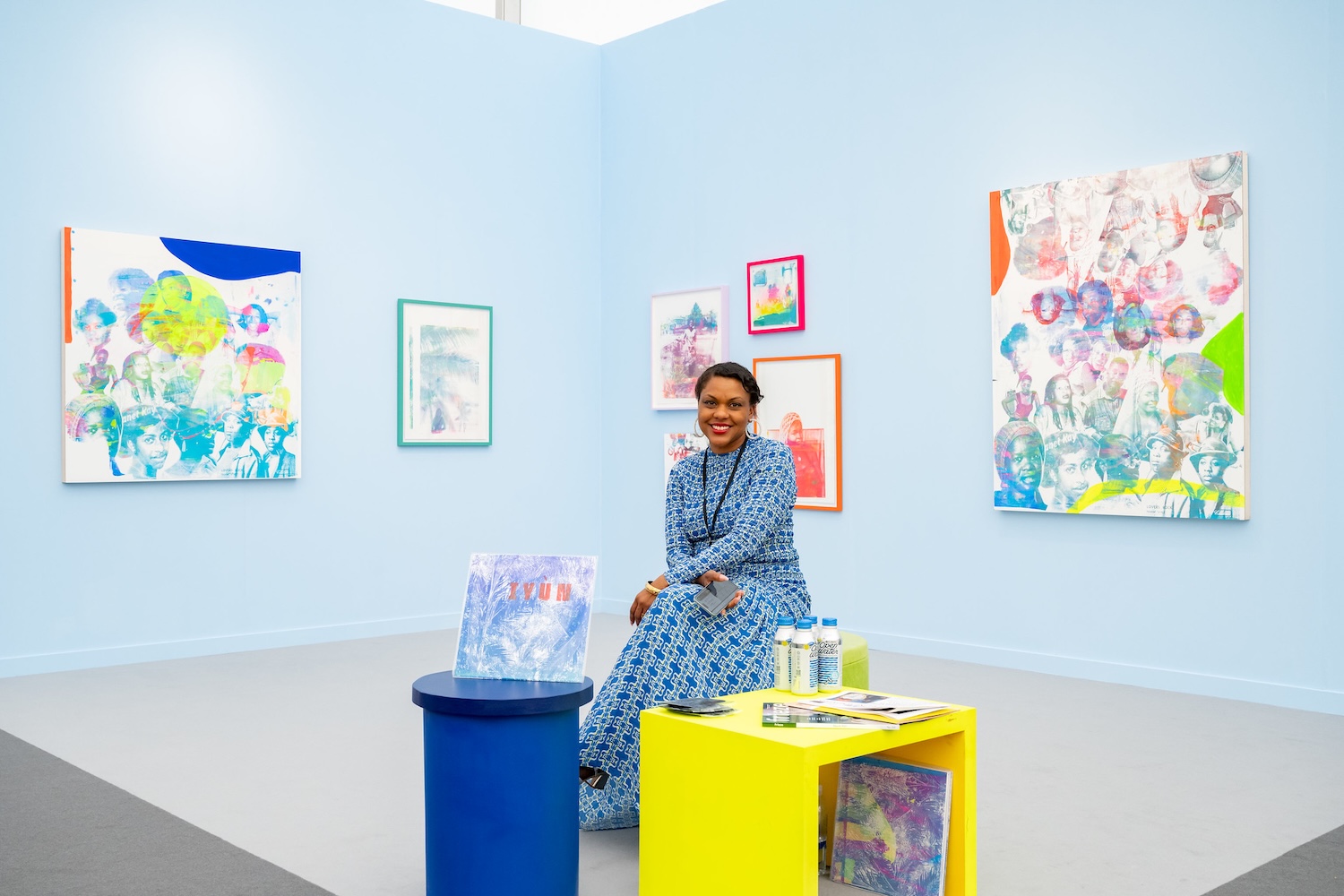It was 2008 when Whitewall last spoke with the philanthropist and collector Eli Broad. Our interview touched on topics like his foundation, The Broad, his collecting instincts and influences, and the importance of art in education. With his recent passing, we wanted to take a look back at the discussion in memorial of Broad’s immense dedication to art.
Eli Broad may look as cuddly as a smiling koala, but he’s notorious in Los Angeles for being a financial and philanthropic giant. People don’t mess with him, especially when he’s donating millions to educational programs, genetic testing, or arts and culture. Three quarters of a century old, the Chicago-born son of Lithuanian Jews ranks as number 46 on Forbes magazine’s recent list of richest Americans. He made his first million by developing tract houses, single homes that could be sold well below market-value by eliminating basements and garages. Then he founded SunAmerica, selling insurance policies to the same middle-class Americans who bought his homes.
Now a full-time nonprofit provider, Broad is turned on most by modern art of a certain period — specifically the time of Jasper Johns, Lichtenstein, and Warhol to Basquiat. He and his wife, Edye, own almost two thousand contemporary artworks. Their fixation on collecting began when Edye bought some Braque lithographs during the seventies. In February, the Broads opened the Broad Contempoary Art Foundation in L.A., where they donate their private pieces for public viewing. When you consider the money artfully thrown to the environs of Hollywood — $56 million to the Los Angeles County Museum of Art, LACMA and another $10 million for acquisitions — Broad’s motto speaks loudly. Let’s just say, money talks and bullshit walks.
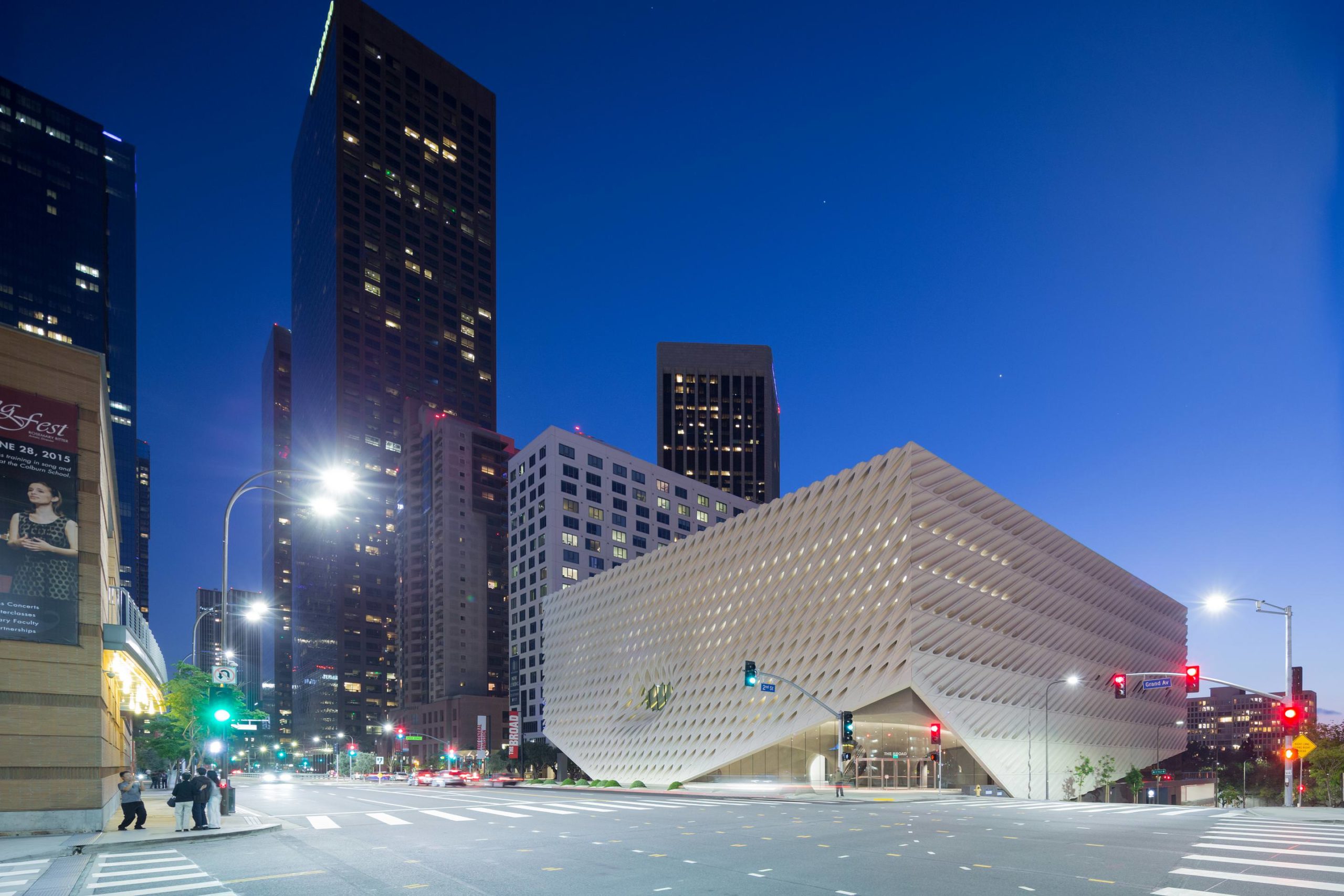 The Broad museum on Grand Avenue in downtown Los Angeles
The Broad museum on Grand Avenue in downtown Los AngelesPhoto by Iwan Baan
Courtesy of The Broad and Diller Scofidio + Renfro.
WHITEWALL: You once stated that L.A. was the art capital of the world. Do you still think that?
ELI BROAD: It is the contemporary-art capital. I say two things. Los Angeles is one of four major cultural capitals of the world. We have better art schools than any other art schools in the country: UCLA, California Institute of the Arts, USC, and Art Center College. We’ve got a great population of world-recognized, working artists. Forty percent of work in the Whitney Biennial came from L.A. In the post-Anderson years. We now have more contemporary art space then any other art space in North America — the Museum of Contemporary Art, the Broad Museum, the Hammer Museum. Without question, New York is the commercial art capital. Where you sell art is one thing. Where art is produced and best shown, and where you train artists, is something else.
WW: Do you see eye-to-eye with Edye on acquisitions?
EB: I am, frankly, more active in that world. She was the first art collector in the family, 35 years ago. I became more and more curious about what was coming into our home, and so on. Then I met Pat Schreiber, who was very kind to me and introduced me to museum directors and gallerists. I was spending all my time with other businesspeople, bankers, lawyers, and so on. I did pretty well in world of commerce. Even as a child, I was curious and wanted to learn new things. I met Jeff Koons, museum directors, and curators. Artists have a different view of society. They get you thinking about social issues. They are reflections of what’s happening.
WW: Which artists who have popped on the scene recently have caught your attention?
EB: A lot of the friendships were made in the eighties and early nineties. We’ve been buying Cindy Sherman’s work since 1981. We bought the first photo stills in a basement on Mercer Street for $200 a work. Then we bought Basquiat when he was living. We’ve got quite a collection. I haven’t had the time to go out exploring. I’d like to meet artists in their late twenties and early thirties.
WW: How did your arc of collecting build?
EB: When we first started, it was a very personal collection. First angular drawing, then we moved into contemporary art. We created the art foundation in 1984, a public collection to lend to museums worldwide.
WW: Some people criticize you for being pretty bossy, and I’ve heard you’ve compared yourself to General Patton. Is that true?
EB: I’m not sure if General Patton is the right thing. I do a lot of reading and research. Once I make a decision, I try to acquire it.
WW: Any regrets?
EB: I remember one auction at Sotheby’s. I should have bought a David Smith Cubi. It took years before another came up for acquiring. We didn’t have the resources originally.
WW: Do you possess an instinct when acquiring art?
EB: To some degree. We would all like to have not bought some things, and wish we’d bought others. We exchange on occasion, but we really don’t sell for tax purposes or any reason. All the works can go into the foundation. The only time we’ve come close to tax-free exchange for like property was with a Van Gogh. We looked at it for 15 years. We got all we wanted out of it. It was from 1889 — thatched huts in Arles.
We have lived with the Van Gogh drawing for many years. We couldn’t keep it on the walls for three or four years at a time because of the upkeep. We exchanged it for a great Rauschenberg painting. It was through an auction house with another collector.
WW: When you are acquiring art for strictly personal means, how does it differ from what you choose for your museum?
EB: In our personal collection, we have more works than we can ever show. It would be rare that we would buy for personal use. The last one was a David Smith Cubi, which is a large outdoor piece. Most of our art is in the Foundation.
We allowed Michael Govan and Lynn Zelevansky at LACMA to take anything they wanted off our walls. Eighty percent is now on public view at BCAM. We are prolific lenders. Art should be shared by the broadest possible public. There are a number of works we’ve lent to the BCAM, like the Jeff Koons Bunny. It’s an icon. There are only four of them in the world. It’s worth 80 million. We bought ours for several hundred thousand dollars.
WW: Larry Gagosian has said that galleries don’t thrive in L.A. because people are more interested in Hollywood. How do you respond to that? Would you like that to change?
EB: We do not have the art scene of New York, but we have a number of good galleries, including Gagosian. There are a lot of good collectors in Hollywood and elsewhere. They will spend their weekends visiting galleries in New York. In L.A., we have twice or three times the number of galleries we had three years ago. Nowhere near New York City, but well ahead of San Francisco or Chicago. Margot Leavin has been around for a number of years. Blum & Poe have shown a number of artists like Murakami and others.
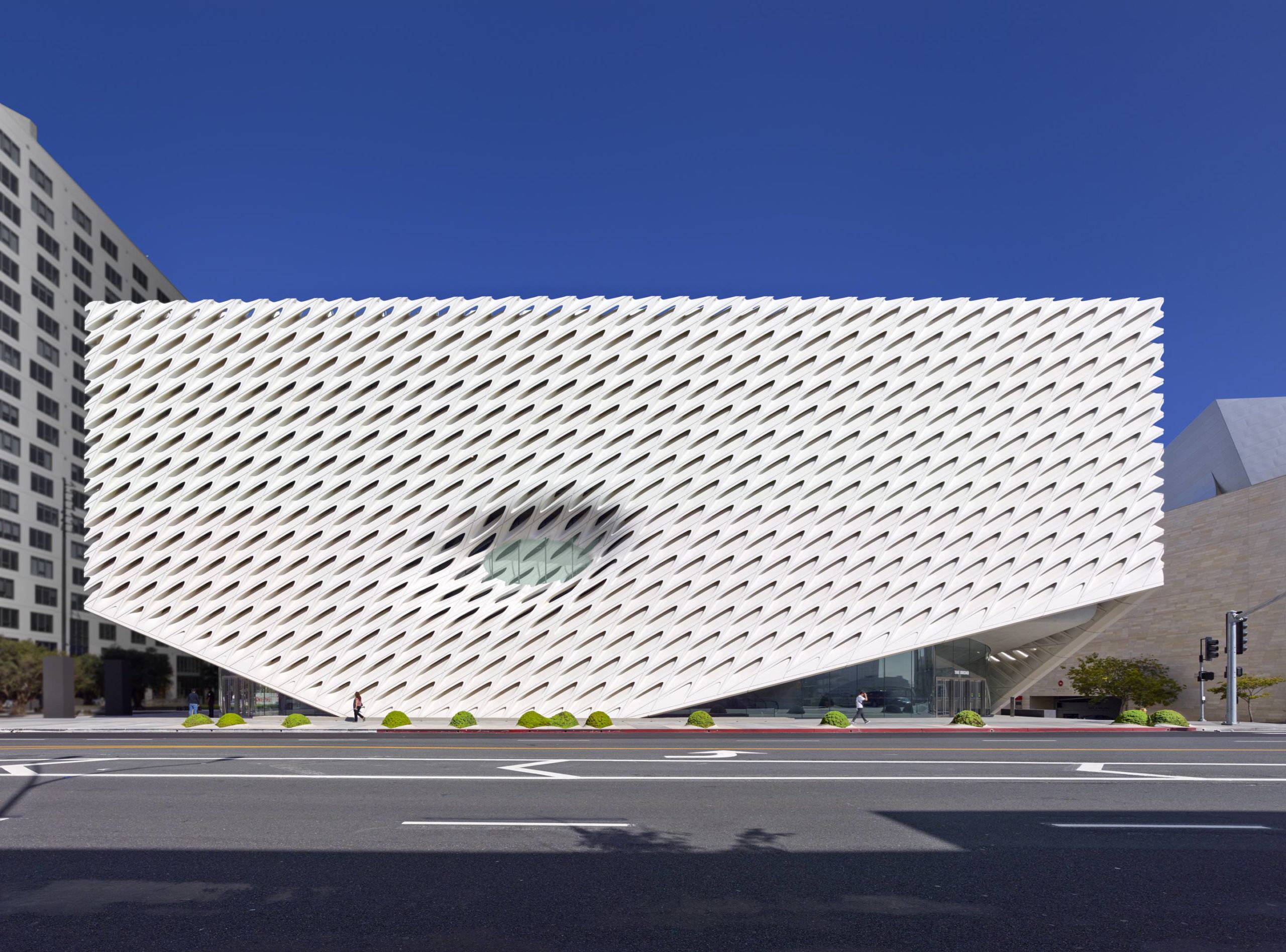 The Broad museum on Grand Avenue in downtown Los Angeles_ photo by Benny Chan, courtesy of The Broad and DIller Scofidio + Renfro
The Broad museum on Grand Avenue in downtown Los Angeles_ photo by Benny Chan, courtesy of The Broad and DIller Scofidio + Renfro
WW: Do you have any Murakami?
EB: I know Murakami. He has been to our home, and we’ve talked. We don’t have Murakamis yet. We enjoy meeting the artists but it’s not the primary decision maker. We try to think where they are historically, where will they be in 20, 30, 40, or 50 years.
WW: So how do gallerists, experts, and other opinions come into play?
EB: I know a number of other collectors, like Don Fischer in San Francisco. We’ll talk about our collections. I have an art foundation with people who do a lot of scouting for me. It depends on what it is. If it’s Jeff Koons work, we’ll go to the studio once or twice, then make a decision on what we’re going to buy. It takes more time when it’s a new artist or someone who has totally changed direction. I do believe that great artists do not keep doing the same things over and over and over. To this day people think the late work of Picasso is not as important as work prior to 1950. Someone who didn’t do as well early in his career was Roy Lichtenstein.
WW: If you could spend the day with one artist, dead or alive, who would it be and why?
EB: I’d choose Jeff Koons, because he’s smart, funny, amusing — a joy to be with. I think back to the early days . . . the great work we have of Rauschenberg, Cy Twombly. I think it would be harder to spend a day with them than Jeff Koons. He’s a different era. Also Ellsworth Kelly. I’ve been with him at dinner parties. He’s very easy to talk to, he’s worldly, and he likes talking about all of that. I’d also like Damien Hirst. Damien is fascinating. I’ve been with him in his places in the country. I had dinner with him a couple of Sundays ago. He’s very smart, amusing, very funny.
WW: Do you own a lot of Damien Hirst?
EB: I think the first thing we got was his Away from the Flock. We have a great spin painting of his with a motor. A butterfly painting. Dot paintings. Medicine cabinets. He’s probably one of the most financially successful artists in the world today. I have everything from a sliced human brain to other things.
WW: Do you feel a sense of art competition among collectors and benefactors in L.A.? I know you’ve had your differences with David Geffen. Is there underlying competition there?
EB: Not really. We’ve been at it longer than others. When I think of the great collectors in the U.S., I think of Don Fischer. Most of these people are younger.
WW: What advice would you give a young collector starting out with his or her first million?
EB: Invest time, not money. It is not simply about acquiring objects. It’s about learning. Visit lots of galleries, museum shows, read art publications, visit art studios. Decide why you want to collect that person, who the artist is, and where they’re from. Usually young collectors see something at a gallery and will buy it.
Don’t start with paintings — start with prints. You can see the essence of the artist better in drawings than in paintings. It’s like a courtship. If I did it over, I would have started as a drawings collector. We started with paintings. I wish we had drawings by Lichtenstein. We have works on paper by Jasper Johns. You can see the hand, pencil marks, the comments inside of the margins. You have a better understanding of what the artist is doing, thinking about.
WW: How do you decide where and when to invest? For example, your foundations fund education, science, and art. How do you decide when to allocate to which? Do the criteria change? What are your criteria?
EB: Every interest is created differently. Personal collecting grew into something far more substantial with the art foundation. Eight or nine years ago, I devoted the most amount of time to those activities. In the scientific, we have no background — it’s opportunistic. Consider Eric Lander and the human genome for the U.S. government.
WW: Under the umbrella of education, how important is art education in your opinion and why?
EB: Art is important, but unless we teach all our children how to read first or have basic math skills, they won’t get through life. When they get through life, art education is important. But if I had to choose, I’d teach them to read first.
WW: How do you think the slack economy will affect art collecting in general?
EB: The economy is going to affect the value of contemporary art in general. It lags behind the property market or stock market over some period of time. The rise of the price of contemporary art far exceeded the stock market. We’ve created a bubble. It can’t keep going up, especially contemporary art. Once you get beyond the greatest works — Francis Bacon or Jeff Koons or Jasper Johns — everything below that has to be adjusted downward. You have people in Europe and elsewhere, in Russia — they will spend a lot of money. I think the art market will be subject to major correction. When things go up 40 to 50 percent a year, five years in row, that’s not sustainable. We’ve already seen it in home prices. They went down another 20 percent.
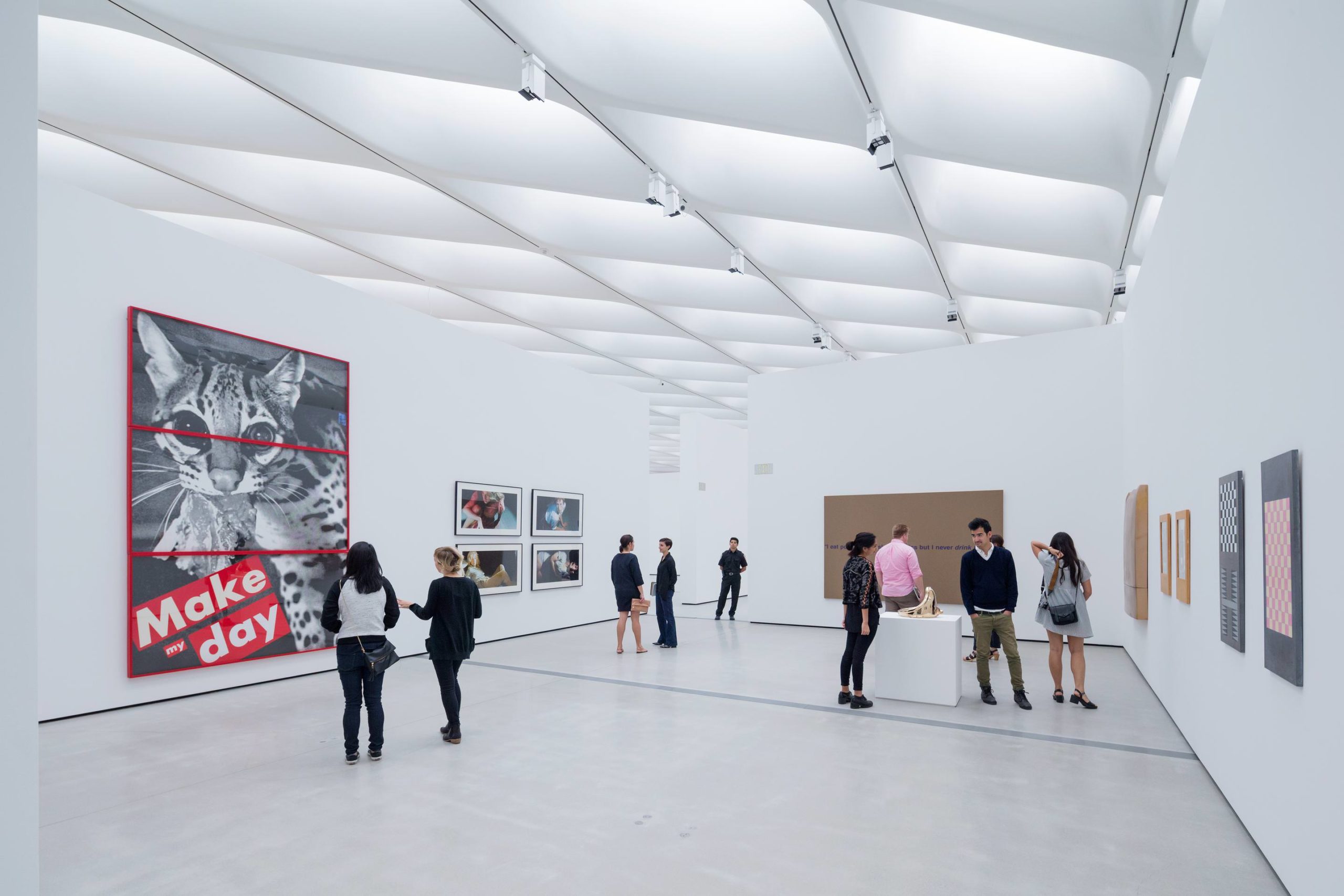 Installation of works by Barbara Kruger, Cindy Sherman, Richard Prince and Sherrie Levine in The Broad_s third-floor galleries_ photo by Iwan Baan, courtesy of The Broad and DIller Scofidio + Renfro
Installation of works by Barbara Kruger, Cindy Sherman, Richard Prince and Sherrie Levine in The Broad_s third-floor galleries_ photo by Iwan Baan, courtesy of The Broad and DIller Scofidio + Renfro







